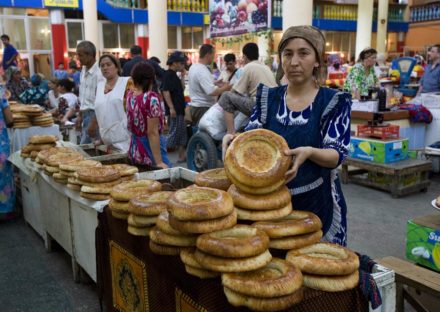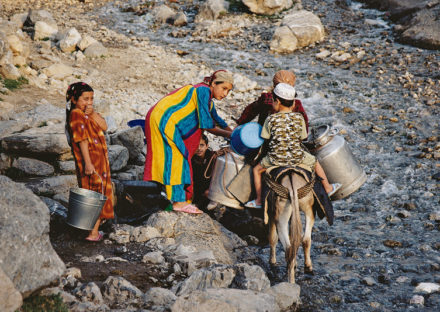Tour overview
Note: Itineraries can be changed and adopted to your requirements. For more information please contact us:
Highlights:
Included
- All accommodation
- All transport as outlined in the itinerary
- Meals – Full Board (B-L-D) B-Breakfast, L-Lunch, D-Dinner
- 1 litter Bottledwater
- All entrance fees, as per itinerary
- Guide Service
Not Included
- Visa fee and visa support
- Beverages other than drinking water
- International flights to/from the start/finish of the trip
- Tips for guide and driver
- Souvenirs
Day 1 Dushanbe City Tour
Our guide will meet you in the airport and accompany to Dushanbe. The entire day is dedicated to a guided city tour. First of we will visit Rudake Park, National library, White House, National state seal, House of parliament and Jomi theatre. After it we will walk in National park to make photos of Ministry of Inner Affairs and the biggest National Flag in the world – 165 m high pole, 30 m wide, 60 m long. After excursion in Central Museum you will have lunch. Then you will visit to Gurminj Museum of traditional musical instruments. To feel real life you should visit Asian bazar. It has colorful goods, fruits and vegetables. We will see today the main highlights of Dushanbe and you will find out many interesting facts about Tajik people. Dinner will be in a traditional restaurant where you try Tajik food.
Day 2 Dushanbe – Kulob – Kalai Khum
Today we will drive to Kalai Khum village. You will see Norak water reservoir that is called blue Sea. The highest point of the day is Shurabad pass (2 200 m) and after drive along Afghanistan border starts. This part will amaze you by its unique mountains – it is already Territory of Pamir Mountains. Over the centuries, the Pamirs have inspired the world’s greatest explorers – Marco Polo, Hsuan Tsang, Mirza Muhammad Haidar. And now you also have a chance to travel here. You will drive along natural border – Pyanj River. Having visited the Pamirs, many travellers called this giant mountain system the ocean of white and blue mountains. This night you will spend in a home stay to see the way of local people’s life.
Day 3 Kalai Khum – Khorog
In the morning we will drive to Khrorog. It is perhaps one of the tiniest cities on the map of the world. It is surrounded by rocky mountains from all four sides. The town was built on the confluence of the 3 rivers where Shokhdara river and Ghund river flow into Pyanj river. On the way to Khorog you will meet Pamir people. A number of anthropological features set the Pamir people apart from the Tajik people. Among the Pamiris, there is a high percentage of people with blonde hair, fair skin and blue eyes. Pamirs Mountains are the highest mountains in the world with human population after the Himalayas in Tibet. Life in the mountains made traditions of local people different from Tajik people.
Day 4 Khorog - Ishkashim
This morning we have a time to explore Khorog including the bazaar and the lovely Botanical Gardens which are perched high above the town, affording some great panoramic views. Then drive to Ishkashim valley some 110 km from Khorog. We will stop at Garmchasma hot springs for an (optional) dip in the natural hot springs.
Day 5 Ishkashim -Yamg
Today we will drive along Tajik-Afgan border to Yamg village. Situated in in the heart of Asia, the Pamirs are a corner of sky-scraping, snow-capped, majestic mountains, transparent clear blue waters of rivers, wide valleys and bone-dry deserts. For hundreds of years, people have called these highest mountains of the world as “the Roof of the World”. Today you will understand why. The land of Pamirs is located at elevations from 3 500 to 4 200 meters above sea level. Pamirs is perhaps one the few areas in Central Asia where ancient ethnic and cultural peculiarities of the Pamir people exist. Over the years, communities were isolated from each other by impassable mountain ranges, and developed into separate enclaves with different dialects and sometimes distinct or different languages. Visit to the nearby village of Namadguti to visit the Khahkha Fortress. This impressive structure rises from a naturally formed platform of rock and dates back to the Kushan era of the 3rd Century. There are a number of these ancient fortresses in the area, and we also visit Yamchun fort, perhaps the most impressive of them. We take a break at the Bibi Fatima hot springs, named for the Prophet Mohammed’s daughter and where local women believe they can increase their fertility.
Day 6 Yamg - Langar
Continuing on we then stop at the 4th Century Buddhist stupas at Vrang, reminders of the ancient pilgrim caravans that passed through the region.
Langar is situated on the crossroad of the Wakhan Corridor with Pamir and Wakhan rivers where the Great Game took place (reached by Capt John Wood in 1838). Visit to sacred place Shrine ShohKambari Oftob in the middle of village and hiking to the famous Vakhan Collection of (3200m) petroglyphs. There are about 6,000 petroglyphs showing different scenes of the life of Ancient people of Pamirs.
Day 7 Langar - Yashikul
We continue our journey along the Pamir River, hopefully spotting one of the rare herds of Bactrian camels that still exist here. The vista before us brings us spectacular views of Afghanistan, with the ice-capped summit of the Wakhan Range. Once our passports have been checked at Kargush army base, we continue north and cross the Khargush Pass. We will pass a number of interesting salt lakes before
continuing on to our overnight stop at Yashil Kul, where we will stay in the small hamlet of Bulunkul. The people living locally are Pamir pastoralists living in a harsh but hospitable environment. Our stay here will deepen our understanding of how people have adapted to live in suchremote mountainous areas, in fact thecoldest place in Tajikistan.
Day 8 Yashikul - Murgab
We’ll spend part of the morning exploring Lake Yashil Kul before movingon. After following the Alichur Plateau. We then continue on to Murgab. This quiet town (with the only bazaar of the High Pamir region) is still struggling with its development due to the nearby Russian border guards’ base being closed
down – the last remaining Soviet influence in this region. The recent opening of the Chinese Qolma Pass, however, has slowlyaided the town in its progression.
Day 9 Murgab - Saritash
Our journey today takes us to Karakul. The road climbs up to the Ak Baital Pass (The White Mare Pass), which at 4655m stands as the highest pass in the former USSR, and on to the Muzkol Valley. Views of mountains and glaciers along the way are simply breath-taking. The tunning Karakul Lake is hidden deep in this expanse of arid landscape. It is a body
of water thought to have been created millions of years ago by a meteorite and noted as one of the most geologically ascinating places on earth. Travelling up to the Kizil Art Pass (4280m) today, we will then cross the border into Kyrgyzstan and
pass through the gateway to the Pamir Plateau, or as Marco Polo called it – ‘TheRoof of the World’
Day 10 Sary Tash - Irkeshtam-Kashgar (China)
Early in the morning you drive along a smooth paved road to the Kyrgyz-Chinese border at Irkeshtam pass. Your guide will help you with border formalities at the check-point on Kyrgyz side. Meeting with Chinese guide and transfer to Kashgar.





